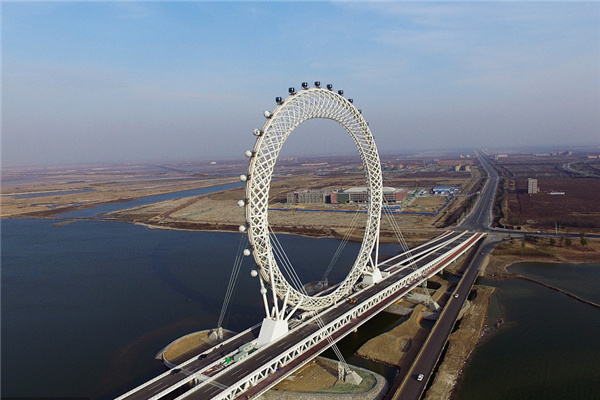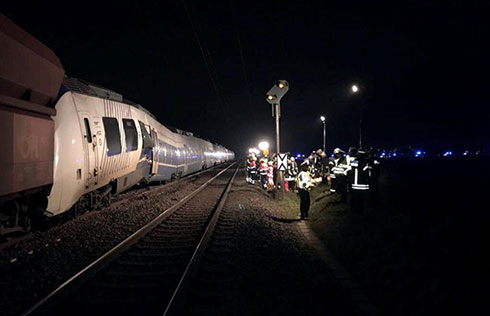

Goodyear Tire & Co's stock climbed 14 percent in the past six weeks, while US Steel Corp gained 7 percent. Both shares rallied as their junk-rated bonds dropped.
During the past decade, a retreat in high-yield debt has foreshadowed every decline of at least 10 percent in the Standard & Poor's 500 Index. This time bonds may be wrong, and stocks may prove more prescient, signaling corporate profits can withstand $162 billion in banks' credit writedowns and a slowing economy.
Shares of the 691 US companies with non-investment grade bond ratings have climbed 5.3 percent in the past month, according to data compiled by Bloomberg. That compares with a 5.2 percent increase in the yield investors demand to own high-yield bonds rather than US Treasury notes, according to an index of 892 issuers compiled by Merrill Lynch & Co.
"The stock market is acting more rationally," says James Swanson, who helps oversee $200 billion as chief investment strategist at MFS Investment Management. "It seems to be saying, 'As bad as things are, we're not in a recession."'
|
Customers check out Goodyear tires on sale in the United States, where the company's stock climbed 14 percent in the past six weeks. Bloomberg News |
Goodyear and US Steel shares are advancing even after the prospect of the US economy slipping into a recession eroded bond investors' confidence that the least-creditworthy companies will repay their debts. The yield premium for junk bonds, which stands at 7.35 percentage points, has tripled since falling to an all-time low of 2.41 percentage points on June 5, according to index data from New York-based Merrill, the world's largest brokerage.
Junk bonds carry ratings below BAA3 from Moody's Investors Service and BBB- from Standard & Poor's.
High risk, low return?
Lincoln Anderson, who oversees $271 billion as chief investment officer at LPL Financial Services in Boston, says the worst start to a year for junk bonds since 1990 isn't warranted.
High-yield bonds in less than two months this year have lost 2.8 percent, including coupon payments, and trade at an average of 89.18 cents on the dollar, Merrill Lynch data show. During the nine-month long recession in 2001, junk bonds declined 2.4 percent. In 1990, they fell 4.4 percent.
While the market for junk bonds may be showing that a contraction is a foregone conclusion, Wall Street economists say otherwise. The economy may expand 1.8 percent this year, according to economists surveyed by Bloomberg. That's more than the 1.6 percent growth rate in 2001 and compares with a contraction of 0.2 percent in 1990, according to Bloomberg data.
Lumped together
"It's indiscriminate selling and not particularly thoughtful analysis of underlying company fundamentals in credit markets," said Anderson. "Bond investors are just lumping everybody in together, which is a big mistake."
Credit-default swaps, or contracts used to hedge against the risk a company will be unable to repay its debts, indicate that 9 percent of junk-rated companies may default in the next 12 months, according to MFS's Swanson, a former high-yield bond specialist who has worked for the Boston-based company for 22 years. That's almost double the rate that Moody's expects in 2008.
Still, the first decline in home prices since the Great Depression and higher financing costs for companies and households may cause defaults to accelerate and stifle economic growth. More than one in five high-yield bonds are now considered distressed, meaning they yield at least 10 percentage points more than benchmark rates, Merrill said last week. That's about the same ratio as before the recession of 2000.
"The high-yield bond market is correctly focused on the stresses in the financial system," says Margaret Patel, fund manager at Evergreen Investment Management Co in Boston, which oversees $274 billion. "I don't think we're seeing any indication of more optimism."
The stock market tells a different story.
A good year
After Goodyear, the largest US tiremaker, this month posted a better-than-forecast fourth-quarter profit of $52 million, shares of the Akron, Ohio-based company jumped the most since Oct. 30, when it last announced results.
Goodyear has beaten analysts' profit estimates for three straight quarters. At the same time, the spread on its bond yield to Treasuries has risen more than 80 percent in the past year. In the past six weeks, the yield premium on Goodyear's 9 percent notes due in 2015 has widened by 33 basis points to 488 basis points. They are rated Ba3 at Moody's, three steps below investment grade. S&P ranks them at B, two rungs lower.
US Steel, the second-largest US-based steelmaker by market value, has gained 5.8 percent since the company reported an 88 percent drop in fourth-quarter profit.
Consensus estimates indicate the Pittsburgh-based company's earnings per share will rise 49 percent in 2008, after falling 34 percent last year. Still, the yield premium on its $450 million 6.05 percent notes due in 2017 widened 125 basis points to 353 basis points since the first week of January, trading at 92.52 cents to the dollar. The debt is rated BB+ at S&P.
"The stock market is correctly smelling out most of these cases, that these companies aren't going to default," says Swanson. "It's just the bond market working where so many people need to sell at once that it's driving the prices crazy low. It's irrational from a fundamental point of view."
Agencies
(China Daily 03/03/2008 page11)













